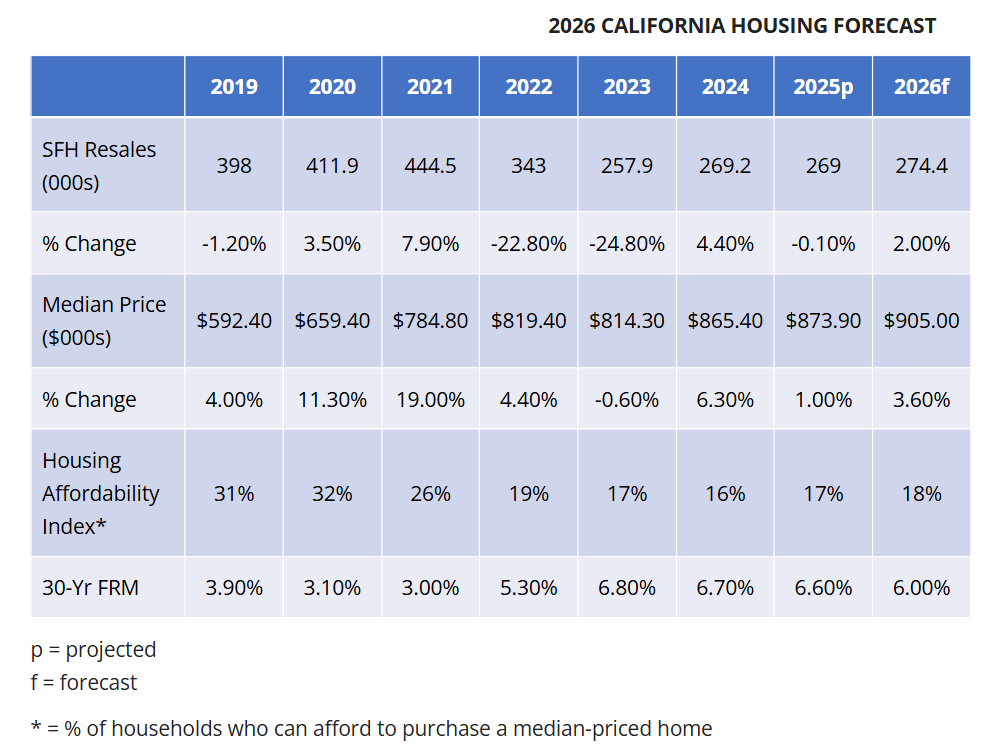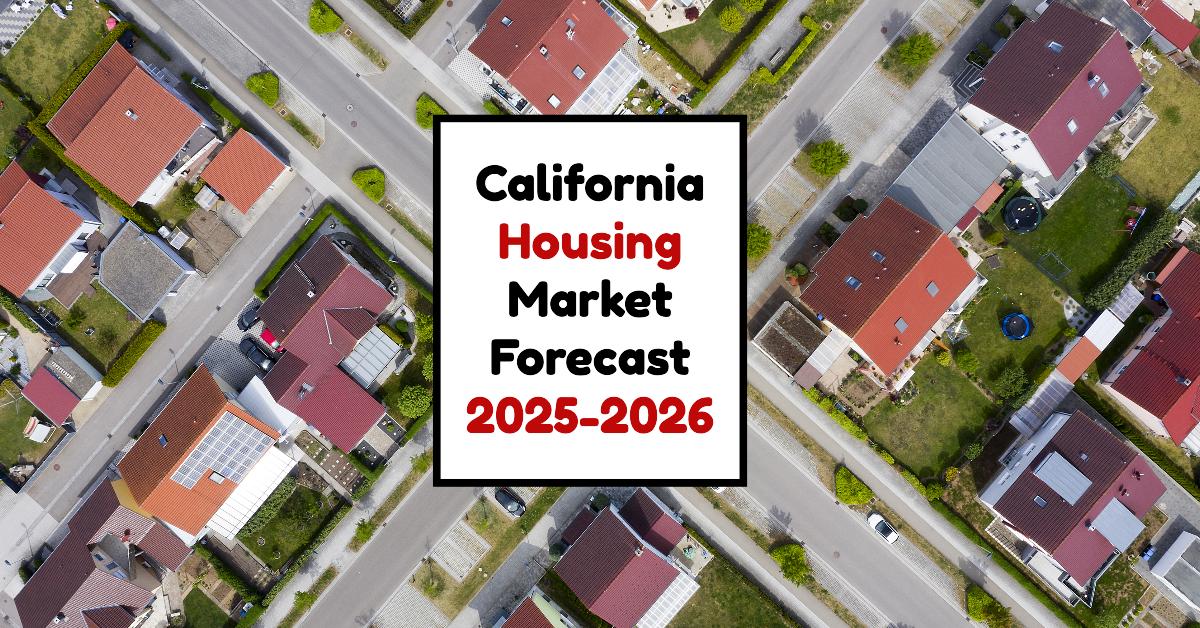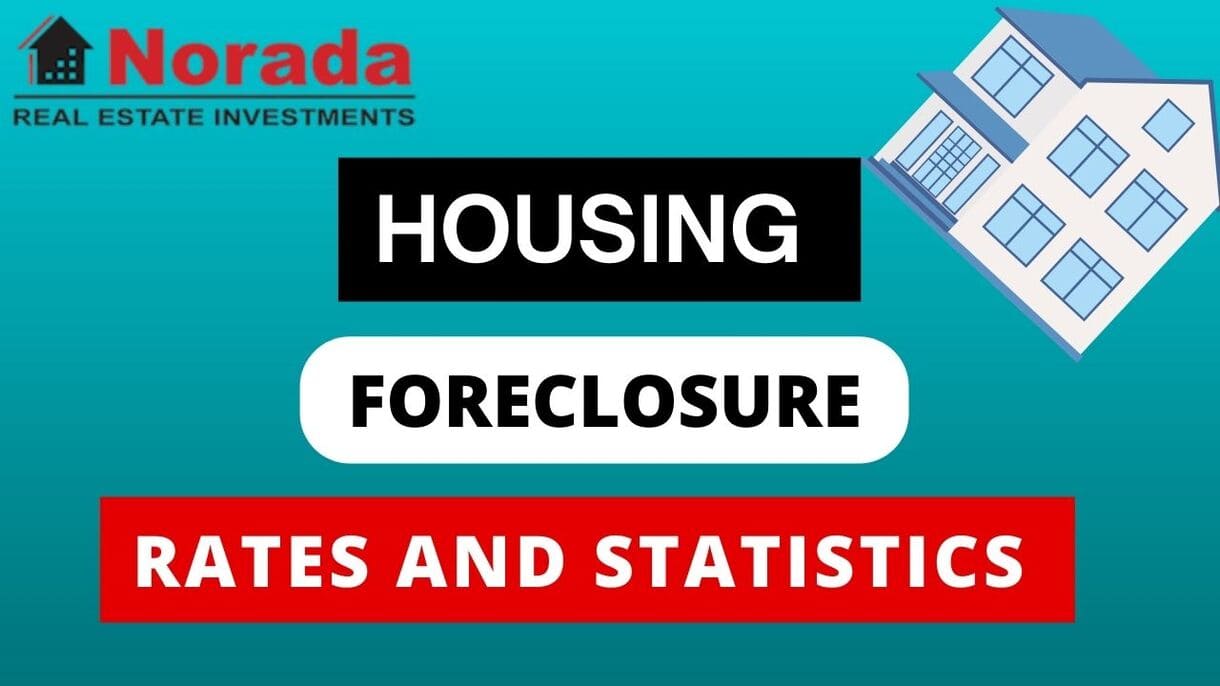The California housing market in October saw a definite uptick in activity, with home sales climbing to their highest point since February. If you're thinking about buying or selling a home in the Golden State, understanding these recent movements is key. The CALIFORNIA ASSOCIATION OF REALTORS® (C.A.R.) reported a solid performance for October 2025, showing that despite some lingering economic worries, the desire for homeownership in California remains strong.
This rise in sales isn't just a minor blip; it indicates a growing momentum in the market. While we're not quite at the level of 300,000 units sold annually, the pace picked up significantly compared to both the previous month and last year. This update delves into what these numbers truly mean for buyers, sellers, and anyone keeping a close eye on California real estate.
The California Housing Market: A Look at October's Trends and What They Mean for You
Home Sales: Picking Up Steam
Let's talk numbers. In October 2025, existing single-family homes in California sold at a seasonally adjusted annualized rate of 282,590. That's a 1.9% increase from 277,410 in September and a notable 4.1% jump from 271,370 in October of the previous year. This consistent growth over two consecutive months, as reported by C.A.R., is a good sign for market health. It shows that demand is not only present but also growing, suggesting that more people are feeling confident enough to make a move.
For the first ten months of 2025, the year-to-date sales figures also showed a modest improvement, up 0.8% compared to the same period in 2024. While this might seem small, consistent, slow growth is often more sustainable than rapid, unpredictable surges. It also means that 37 months have passed since sales were last above the 300,000 benchmark, highlighting the market's steady, albeit not explosive, recovery.
Key Takeaway: More homes are changing hands in California, a positive sign for market activity.
Home Prices: Holding Steady with a Slight Dip
When it comes to prices, October presented a more nuanced picture. The statewide median home price in October 2025 was $886,960. This was a small 0.4% increase from September's $883,640. However, looking back a year, the October 2025 median price was 0.2% lower than October 2024's $888,740.
This slight year-over-year dip is important to note. While prices haven't dramatically fallen, they haven't seen the consistent year-over-year growth we've observed in some past periods. It suggests a market that is stabilizing rather than experiencing rapid appreciation. The median price remains near a record high, which was set about six months ago. This stability is a double-edged sword: good for buyers seeking more predictable costs, but perhaps a little less exciting for sellers hoping for quick, significant gains.
My Take: This price stability is a welcome development in my book. It removes some of the unpredictable inflation that can price people out of the market. It feels like we're moving towards a more balanced, sustainable price point, which is healthier for the long-term market.
Regional Performance: A Mixed Bag
California is a big state with diverse economic landscapes, and its housing market reflects that.
- Southern California and the Central Valley both saw good year-over-year sales gains, with Southern California up 5.6% and the Central Valley up 4.0%.
- The Far North led the pack with an impressive 18% increase in sales, showing strong activity in its particular markets.
- The San Francisco Bay Area, often a hotbed of real estate activity, also posted moderate growth at 2.5%.
- The Central Coast, however, experienced a slight dip in sales, down 1.5% year-over-year.
When it comes to home prices, the story differs:
- The Central Coast saw a solid 7.9% price increase year-over-year, reaching a median of $1,068,000.
- Southern California also saw a modest 1.1% uptick in median price.
- Conversely, the Far North saw prices decline by 3.8%, and the San Francisco Bay Area experienced a 1.1% drop in median price. The Central Valley saw a very slight decrease of 0.2%.
My Observation: It's fascinating to see how different regions react to broader economic forces. The demand for housing is clearly strong across much of the state, but specific local factors continue to shape individual market performance, especially when it comes to pricing.
Housing Supply: Inventory Easing
A key factor influencing any market is the available supply of homes. In October, we saw the typical seasonal slowdown in new listings. The Unsold Inventory Index (UII), which measures how many months it would take to sell the current active listings at the current sales pace, fell to 3.2 months from 3.6 months in September. This is essentially unchanged from 3.1 months in October 2024.
While the overall number of active listings continues to grow year-over-year (for the 21st consecutive month), the rate of this growth is slowing down. The 10.3% year-over-year increase in active listings was the smallest seen since February 2024. This deceleration in inventory growth, especially as we head into the holiday season, suggests a gradual tightening of supply.
What does this mean? When inventory growth slows, it can signal a market shifting away from an overabundance of homes toward a more balanced situation, or even a slight seller's advantage in some areas.
Days on Market: Homes Taking a Little Longer to Sell
The median number of days it took to sell a California home in October was 32 days. This is up from 25 days in October 2024. This increase in selling time is not surprising given the general seasonal trends and the slight increase in overall available homes. It suggests that buyers have a bit more time to consider their options compared to last year, and sellers might need to be a bit more patient.
However, my experience tells me that this average can be a bit misleading. While some homes may sit for longer, desirable properties in good locations are likely still moving quickly. It's crucial to look at local data to get a true sense of how long homes are actually taking to sell in a specific neighborhood.
Table: Days on Market Snapshot
| Region | October 2025 (Days) | October 2024 (Days) | Change |
|---|---|---|---|
| California (Overall) | 32 | 25 | +7 |
| San Francisco Bay Area | 22 | 18 | +4 |
| Southern California | 35 | 27 | +8 |
| Central Coast | 30 | 22 | +8 |
| Central Valley | 32 | 24 | +8 |
| Far North | 34 | 28 | +6 |
Note: Data compiled from C.A.R. reports. Regional data may vary from county-level figures.
Mortgage Rates: A Volatile Factor
Mortgage rates have been a rollercoaster ride, and October was no exception. The 30-year fixed-mortgage interest rate averaged 6.25% in October, which was down from 6.43% in October 2024. This decrease is generally good news for buyers, as it can make monthly payments more affordable.
However, C.A.R. Senior Vice President and Chief Economist Jordan Levine noted that rates briefly approached their 12-month low in October but have since resumed an upward trajectory. This volatility is a significant factor impacting buyer confidence. When rates are unpredictable, buyers can become hesitant, leading them to either pause their search or try to lock in a rate quickly.
My Two Cents: The average mortgage rate is important, but the direction rates are moving is often more impactful on immediate buyer behavior. The recent uptick is definitely something to watch closely as we move further into the late fall and winter months.
Is California a Buyer's or Seller's Market? A Shifting Balance
So, what does all this mean for market dynamics? Are we in a buyer's or seller's market? Based on the C.A.R. data for October 2025:
- Sales-to-List Price Ratio: The statewide ratio was 98.3%, meaning homes were selling on average at 98.3% of their asking price. This is down from 99.9% in October 2024. A ratio below 100% indicates that, on average, homes are selling for slightly less than the original list price. This suggests a market leaning slightly towards buyers, as they have a bit more negotiation power.
- Unsold Inventory Index: At 3.2 months, this is still below the 4-6 months generally considered balanced. This indicates that, overall, supply is still tight enough to favor sellers in many areas.
My Conclusion: It's a transitional market, leaning more towards balanced with seller advantages in many areas. While buyers are starting to gain a little more negotiation ground, as shown by the sales-to-list price ratio, the fundamental issue of low inventory means that sellers with well-priced, desirable homes are still in a strong position. It’s not a strong seller’s market like we saw during the peak of the pandemic housing boom, nor is it a buyer's market where buyers can dictate terms. It's a nuanced environment that requires careful strategy for both parties.
Looking Ahead
C.A.R. President Tamara Suminski noted that “housing demand in California has been steadily improving, with home sales rising for the third month in a row.” She also commented that “home prices are growing at a manageable pace, and we’re seeing a healthier balance between buyers and sellers.” This sentiment suggests that I, as a real estate professional who navigates these numbers daily, see a market that is maturing and moving towards greater stability. While ongoing mortgage rate volatility and economic uncertainty could cause some hesitation, the fundamental demand for California real estate remains a powerful force.
As we wrap up 2025 and look towards 2026, the California housing market update from October reveals a market that is active, stabilizing, and full of opportunity for those who approach it with knowledge and a solid strategy.
California Housing Market Forecast: What to Expect in 2026

The California housing market is poised for a gentle upturn in 2026, with home sales and the median price expected to inch up slightly. According to the CALIFORNIA ASSOCIATION OF REALTORS® (C.A.R.), we can anticipate existing single-family home sales to reach around 274,400 units, a 2% increase from 2025. The median home price is projected to hit a new record, climbing 3.6% to $905,000. While this might sound like a straightforward prediction, dig a little deeper, and you'll find a more nuanced picture shaped by economic shifts, interest rates, and a slowly improving affordability situation.
My Take on the 2026 Outlook
As someone who's been following the California real estate scene for a while, I can tell you that “inching up” feels like a pretty accurate description. We've seen some wild swings in the past, and frankly, a period of relative stability is what many buyers and sellers are hoping for. C.A.R.'s forecast suggests that stability is on the horizon, but it's not going to be a free-for-all. Affordability is still a major hurdle, but there are glimmers of hope.
A Look at C.A.R.'s Projections
Let's break down what C.A.R. is predicting for the coming years:
| Year | SFH Resales (000s) | % Change | Median Price ($) | % Change | Housing Affordability Index (%) | 30-Yr FRM (%) |
|---|---|---|---|---|---|---|
| 2024 | 269.2 | 4.40% | $865,400 | 6.30% | 16% | 6.70% |
| 2025p | 269.0 | -0.10% | $873,900 | 1.00% | 17% | 6.60% |
| 2026f | 274.4 | 2.00% | $905,000 | 3.60% | 18% | 6.00% |
p = projected, f = forecast
As you can see, 2025 is looking like a bit of a holding pattern, with sales essentially flat compared to 2024. However, the median price is still expected to tick up slightly. The real movement, according to this forecast, is in 2026, where we see both sales and prices showing more noticeable, albeit still moderate, growth.
Why the Gentle Climb?
Several factors are expected to contribute to this gradual ascent:
- Interest Rates Cooling Down: This is a big one. C.A.R. forecasts the average 30-year fixed mortgage rate to drop to 6.0% in 2026. This is a significant improvement from the averages seen in recent years and even the 6.6% projected for 2025. Lower mortgage rates mean more buying power for consumers. Even though it's still higher than pre-pandemic levels, it's a move in the right direction and, importantly, lower than the 50-year historical average of nearly 8%.
- Slightly Better Affordability: With lower interest rates and potentially moderate price gains, housing affordability is predicted to inch up. The index is expected to reach 18% in 2026, meaning 18% of households will be able to afford to buy a median-priced home. This is a small but welcome improvement from 16% in 2024 and 17% in 2025. For many Californians, this slight shift could make the dream of homeownership feel a bit more attainable.
- Increasing Inventory: The forecast indicates that housing supply will continue to improve, with active listings potentially rising by nearly 10% in 2026. When more homes are available, it can ease some of the intense competition we've seen in the market. This could give buyers a bit more breathing room and potentially moderate intense bidding wars.
What About the Economy?
The housing market doesn't exist in a vacuum. The broader economic picture plays a crucial role.
- Slowing GDP Growth: The U.S. gross domestic product (GDP) is expected to grow at a slower pace in 2026, around 1%, after a projected 1.3% in 2025.
- Job Growth and Unemployment: California's nonfarm job growth is also projected to slow down, with a 0.3% increase in 2026 after a 0.4% rise in 2025. Consequently, the unemployment rate is expected to creep up to 5.8% in 2026 from 5.6% in 2025 and 5.3% in 2024. While a slight increase in unemployment can be concerning, these numbers suggest the job market, while cooling, isn't collapsing.
C.A.R. President Heather Ozur points out that as economic uncertainty begins to clear and mortgage rates decline, housing sentiment should improve. This is a key piece of the puzzle – people are more likely to make big financial decisions like buying a home when they feel more secure about their jobs and the economy.
Potential Roadblocks and Challenges
It wouldn't be wise to paint an entirely rosy picture. The forecast also highlights several challenges that could still impact the market:
- Inflation: Inflation is likely to pick up, with the annual average Consumer Price Index (CPI) expected to reach 3.0% in 2026, up from 2.8% in 2025. Higher inflation can erode purchasing power and impact what people can afford.
- Home Insurance Crisis: The ongoing issues with homeowners insurance in California are a significant concern. Rising premiums and reduced availability of coverage can make homeownership more expensive and less attractive, especially in fire-prone areas.
- Trade Tensions: Lingering trade tensions between the U.S. and its trading partners can create economic uncertainty, which can ripple through the housing market.
- Stock Market Volatility: A potential stock market bubble could burst, leading to financial instability and affecting the confidence of high-net-worth individuals who are often significant players in luxury real estate markets.
Senior Vice President and Chief Economist Jordan Levine notes that despite these headwinds, the improving lending environment and clearing economic clouds will be key drivers.
What This Means for You
So, what does all this forecast talk mean for you, whether you're looking to buy, sell, or just keep an eye on your investments?
- For Buyers: The forecast offers a glimmer of hope. Lower interest rates and a slight increase in inventory in 2026 could make it a more favorable year for buyers than the preceding ones. However, affordability remains a challenge, so smart financial planning and patience will still be crucial. Don't expect a crash, but rather a market that might be slightly less of a seller's dominance.
- For Sellers: If you've been holding off, 2026 might present a more opportune time to list your home. With stabilizing prices and rising demand, you could see your property fetch a good price. However, the days of astronomical offers might be behind us, and a more realistic pricing strategy will be important.
- For Homeowners: If you own a home in California, the moderate price appreciation suggests that your home equity is likely to continue growing, albeit at a steadier pace than in boom years.
My personal feeling is that California's housing market, given its fundamental strengths in desirability and economic output, will continue to be resilient. The forecast for 2026 suggests a return to a more sustainable growth pattern. It's not a market for speculators looking for quick flips, but for those looking for long-term value and a place to call home, opportunities will likely emerge.
The key takeaway from C.A.R.'s 2026 California Housing Market Forecast is that we're looking at a period of gradual improvement. Sales and prices are projected to rise modestly, driven by falling interest rates and slightly better affordability, while still navigating economic uncertainties and persistent challenges like insurance costs. It's a market that demands a well-informed approach, but one that holds promise for those looking to enter or move within it.
From Day One to Decades Ahead: Turnkey Real Estate That Pays
Turnkey properties let you start earning rental income from day one—no renovations, no tenant hunts, no management headaches.
Work with Norada Real Estate to find vetted, cash-flowing markets tailored to your goals—so you can build steady returns without the stress.
HOT NEW LISTINGS JUST ADDED!
Speak with a seasoned Norada investment counselor today (No Obligation):
(800) 611-3060
Related Articles:
- California Housing Market Predictions 2025
- The Great Recession and California's Housing Market Crash: A Retrospective
- California Housing Market Cools Down: Is it a Buyer's Market Yet?
- California Dominates Housing With 7 of Top 10 Priciest Markets
- Real Estate Forecast Next 5 Years California: Boom or Crash?
- Anaheim, California Joins Trillion-Dollar Club of Housing Markets
- California Housing Market: Nearly $174,000 Needed to Buy a Home
- Most Expensive Housing Markets in California
- Abandoned Houses for Free California: Can You Own Them?
- California Housing in High Demand: 19 Golden State Cities Sizzle
- Homes Under 50k in California: Where to Find Them?
- Will the California Housing Market Crash in 2024?
- Will the US Housing Market Crash?
- California Housing Market Crash: Is a Correction Coming Up?





